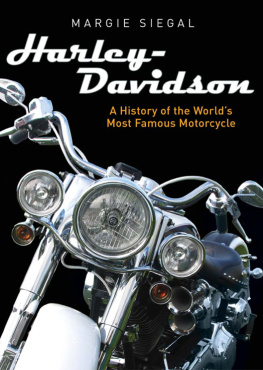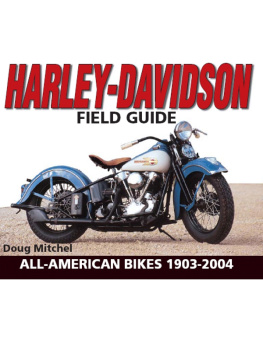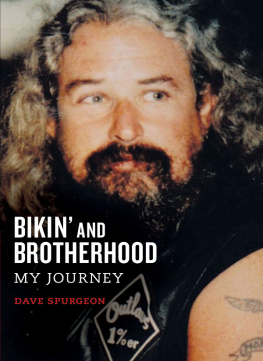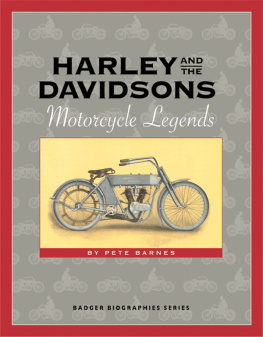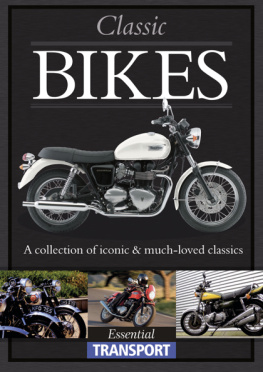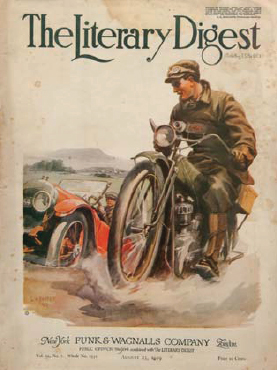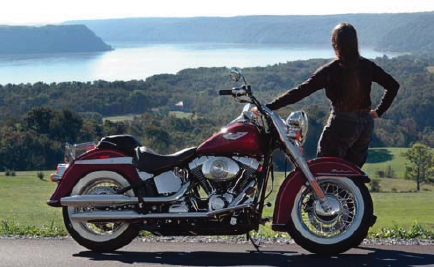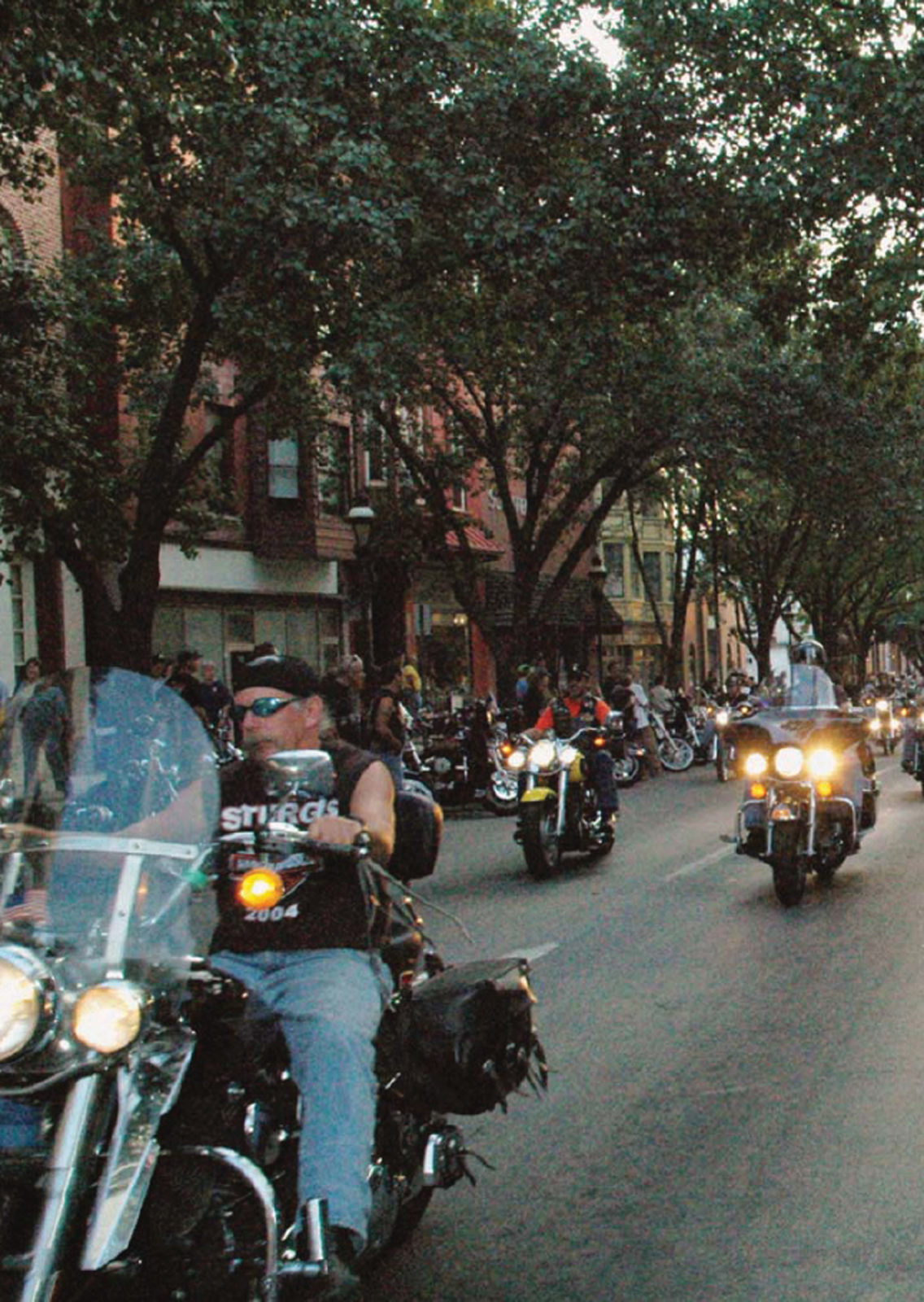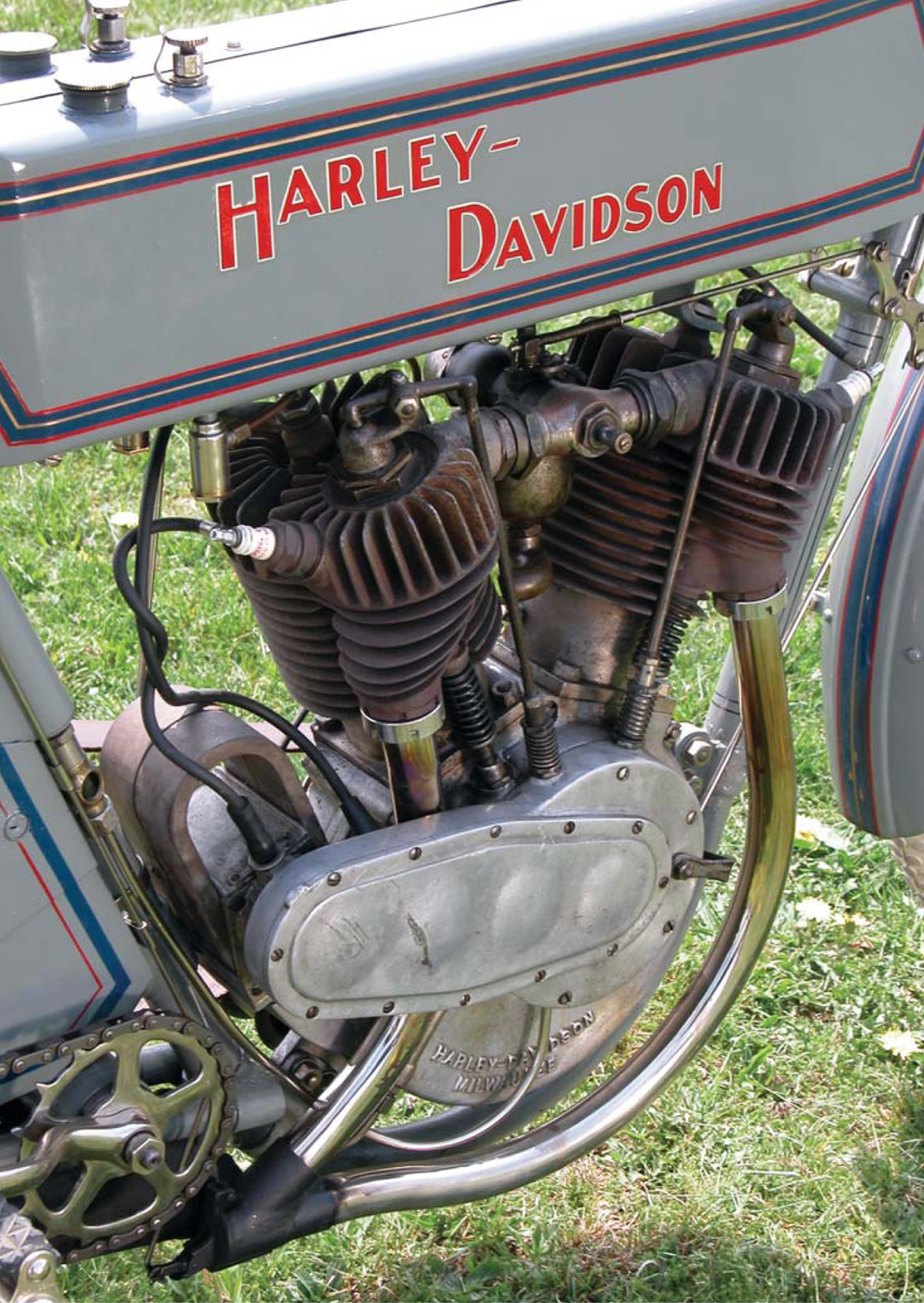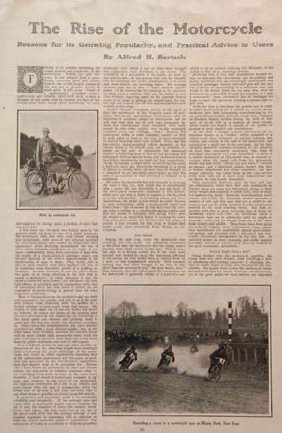HARLEY-DAVIDSON:
A HISTORY OF THE WORLDS MOST FAMOUS MOTORCYCLE
Margie Siegal
CONTENTS
Motorcycles parade through the streets and past an appreciative audience of friends and family.
INTRODUCTION
If I have to explain, you wouldnt understand.
Slogan on t-shirt
T HERE is s something about motorcycles, the experience of moving through the air at speed, that attracts people. And if there is something about motorcycles in general, there is more than a mere something about Harley-Davidson motorcycles. Harley-Davidson has been building motorcycles for over a century, and in that time, its products have acquired an aura. There is a certain amount of magic about a Harley: it is a lot more than a motor, a frame, and two wheels. When most people look at a Harley, they are seeing not a vehicle, but a cultural icon. Although Harley-Davidson motorcycles started out as economical transport, few Americans now ride Harley-Davidsons just because they want to get from point A to point B. The experience of the trip is the important thing when riding a motorcycle, and especially when riding a Harley.
This brand is embedded in the American popular mind as THE motorcycle, to the point where riders of other makes are often asked if they wouldnt rather ride a Harley. Harleys turn up in ads for totally unrelated products, and in the windows of retail stores. They appear in movies and on television, and when they do, the Harley is a character in itself. Putting an actor or actress on a Harley is a definite statement.
It wasnt always like this. When the Davidson brothers and their friend William Harley started out to build motorcycles at the turn of the twentieth century, their effort was only one of over a hundred small American motorcycle factories. Out of all those businesses, only Harley-Davidson has survived.
This book not only details the specific models that Harley-Davidson has produced over the years, but also explores why Harley-Davidson survived when the others did not, and the role that Harley-Davidson and its motorcycles have played in American economic and social life.
Come along for the ride. It will be an interesting and enjoyable trip, and together we will prove that t-shirt wrong.
The Harley-Davidsons inlet-over-exhaust twin cylinder engine. A version of this engine powered Harley Davidson V-twins from 1911 to 1929. Long thin rods actuated the intake valve in the top center of the cylinder. The exhaust valve is covered by a spring and is worked from below. The gear train to the magneto is behind the oval cover.
MECHANICAL BEGINNINGS
T HE IDEA of a motorcyclea motor-driven bicyclewas popularized by a swindler by the name of Edward Pennington. Pennington demonstrated a prototype motorcycle in Milwaukee, Wisconsin, in 1895, and this demonstration was the talk of the town. Shortly afterwards, he left for England, where he raised money from backers, then disappeared. Pennington had a real gift for publicity, and his demonstration sparked the idea of a motor-driven cycle in a lot of people, possibly including two Milwaukee teenagers, William S. Harley and Arthur Davidson.
Edward Penningtons prototype motorcycle was not a commercially viable product (no one has ever figured out how it ran) but, by the time of Penningtons 1895 demonstration, the idea of a motorcycle had the potential to be more than a dream. All the components were in place for a motor driven two-wheeler to become a reality. In the 1890s, the Count De Dion financed a French company that built the first ever reliable lightweight internal combustion engines. From 1896, these air-cooled single cylinder engines were imported to the United States. They were discussed, dissected and copied by early motorheads. Sparked by battery and coil ignition, the valve arrangement was inlet over exhaust, with a vacuum-operated intake valve. Other components needed for a motorcycle were invented around this time: the pneumatic tire, the coaster brake, and seamless steel tubing for the frame. The requirements for good handlingfront fork rake and trail, for examplehad been worked out by the bicycle manufacturers.
By 1902, at least thirteen different factories were building motorcycles in the United States, all using variations of the De Dion motor. William and Arthur had been trying to build their own motorcycle for a year, and were getting nowhere. Finally, Arthurs brother Walter Davidson came home to attend a family wedding, saw the experimental motor and got bit by the motorcycle bug. With his help, a first prototype was ready in 1903. This first prototype did not develop enough horsepower, and a second prototype was built, possibly with help and advice from neighbor Olin Evinrude, of outboard motor fame.
A magazine article from World War I that discusses the increasing popularity of motorcycling and how to get involved.
This second prototype was a success, even through it looked nothing like what is now thought of as a Harley. The bore of the single-cylinder engine was three inches and the stroke was 3 inches, for displacement of 24.74 cubic inches or 405.41 cubic centimeters. This little engine, with vacuum-operated intake valves, was housed in a loop-frame chassis. The rear wheel was driven by flat belt. The gas tank, oil tank and battery housing were all strapped to the top tube. The finish was black, and the engine cases were polished aluminum alloy.
Two more motorcycles on the pattern of the second prototype were completed in 1904, of which one was sold. Eight strap-tank Harleys left the Davidson family backyard in 1905. The fledgling company published a catalog in 1906, and shortly afterwards purchased a lot and built a tiny factory on it. Yearly production grew to fifty bikes. Walter Davidson started participating in endurance runs, which at the time were excellent advertisements. Prospective customers, unaccustomed to gasoline-powered vehicles, were concerned that the bike would break down and they would be stranded at the side of the road. Successful endurance runs helped calm the fears of the public.
These first Harleys were not particularly innovative, but for their time they were powerful and reliable. By 1907, the company was a regional success: the first prototype twin appeared in that year, there were eighteen employees on the payroll, and the machine had been updated with the Sager-Cushion sprung fork. Walter Davidson participated in an endurance run from Chicago to Kokomo, Indiana, and was one of only three participants to maintain a perfect score.
The following year, 1908, Harley reached National prominence, due to yet another enduro victory by Walter. His perfect score1,000 points plus another five points for consistencywas extensively publicized by the American motorcycle press, who were impressed by Walter, the motorcycle, and the sound business methods of the young Harley-Davidson company. This excellent free publicity brought in numerous orders, and sales soared to 450 for the year.
Next page
